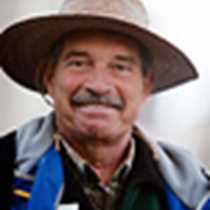Helsinki, Finland
Almost hidden in the Gulf of Finland, a big part of the Baltic Sea, lies Helsinki. The largest and most important port of this country, full of ferries, some jet, and with the fleet of icebreakers built here, the city bustles with work. Many boats and ships of all sizes interconnect Finland with the other great ports of the Baltic: Stockholm (Sweden), Tallinn (Estonia), Riga (Latvia), Gdansk (Poland), and Copenhagen, the capital of Denmark.
After docking in the morning, we visited the center of the city, slowly walking to the most important parts. Among the highlights of our walk was the Lutheran Cathedral.
Helsinki has a great history, being part of Sweden at times and of Russia others. It also boasted a super fort at one time, considered unconquerable. So many cannons deterred the attack of enemy countries, but succumbed at last to more modern technology: bigger cannons with a longer range. The pieces of artillery were concentrated in the Fort of Suomenlinna, built almost at the entrance to the port by the Swedish in 1748, on five interconnected islands. The builder of this fort was Augustin Ehrensvärd. His remains lie in an elaborate tomb on the grounds of the fort.
Here we visited during the early afternoon, after a 15-minute boat ride through the harbor. Easy walking tours led us to chambers where the cannons were housed, to views of the dry dock nest to the fort, and to the officer's residences.
The same boat took us back to the center, in the very near vicinity of our own ship, the National Geographic Endeavour. A short walk later we were all aboard and lifted anchor, heading out into the open ocean and with our bow pointed in the direction of Stockholm.
Almost hidden in the Gulf of Finland, a big part of the Baltic Sea, lies Helsinki. The largest and most important port of this country, full of ferries, some jet, and with the fleet of icebreakers built here, the city bustles with work. Many boats and ships of all sizes interconnect Finland with the other great ports of the Baltic: Stockholm (Sweden), Tallinn (Estonia), Riga (Latvia), Gdansk (Poland), and Copenhagen, the capital of Denmark.
After docking in the morning, we visited the center of the city, slowly walking to the most important parts. Among the highlights of our walk was the Lutheran Cathedral.
Helsinki has a great history, being part of Sweden at times and of Russia others. It also boasted a super fort at one time, considered unconquerable. So many cannons deterred the attack of enemy countries, but succumbed at last to more modern technology: bigger cannons with a longer range. The pieces of artillery were concentrated in the Fort of Suomenlinna, built almost at the entrance to the port by the Swedish in 1748, on five interconnected islands. The builder of this fort was Augustin Ehrensvärd. His remains lie in an elaborate tomb on the grounds of the fort.
Here we visited during the early afternoon, after a 15-minute boat ride through the harbor. Easy walking tours led us to chambers where the cannons were housed, to views of the dry dock nest to the fort, and to the officer's residences.
The same boat took us back to the center, in the very near vicinity of our own ship, the National Geographic Endeavour. A short walk later we were all aboard and lifted anchor, heading out into the open ocean and with our bow pointed in the direction of Stockholm.



